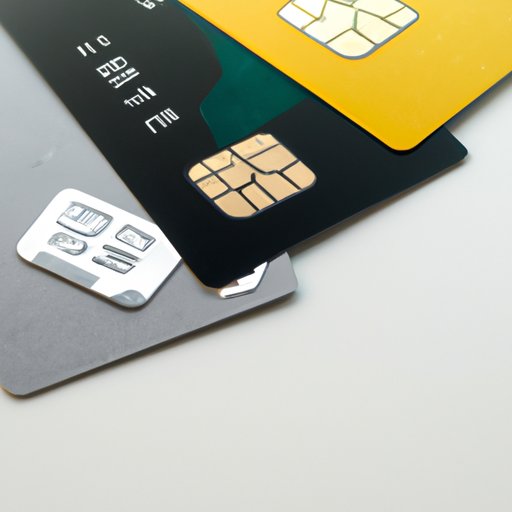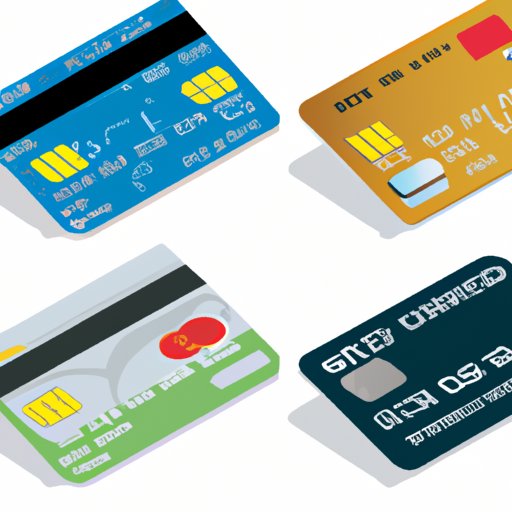
I. Introduction
If you’ve ever needed to send cash through the mail, you may have considered using a money order. These simple payment instruments have been around since the 18th century and are still popular today. But what if you don’t have cash, and all you have is a credit card? Can you use it to purchase a money order? The answer is, it depends. In this article, we’ll explore the options available, the potential pitfalls to avoid, and how to use your credit card to purchase a money order safely and efficiently.
II. Can You Use a Credit Card for a Money Order? The Ultimate Guide
A money order is a paper document that functions like cash. It’s a guaranteed form of payment issued by financial institutions, such as the US Post Office, Western Union, and MoneyGram. Money orders are useful when you need to make a payment but don’t have access to a checking account, or you prefer not to use personal checks. To buy a money order, you typically need to pay cash or use a debit card, but some issuers may allow you to use a credit card.
However, many money order issuers have rules about using credit cards for money orders. For example, some issuers may only accept credit cards if you purchase a money order in person. Others may impose restrictions on the amount you can charge to your credit card, or require that you present a valid ID when using a credit card. Always read the terms and conditions of the issuer before attempting to use your credit card to purchase a money order.
To avoid hidden fees and make smart decisions when using credit cards for money orders, consider the following tips:
- Avoid using a credit card to purchase a money order if you don’t have the means to pay off your balance in full each month. Interest and fees can quickly add up, making it an expensive way to borrow money.
- Some credit cards offer cashback rewards or points when you use them to purchase money orders. Take advantage of these rewards programs if they are available. It’s a great way to make the most of your purchase.
- If you need to send a large amount of money, purchasing multiple smaller money orders may be more cost-effective than buying one large one. Check with the issuer to see if they have a maximum limit on the amount you can charge to a credit card.
- Be mindful of any fees associated with using a credit card for purchasing a money order. Some issuers may charge extra fees, such as cash advance fees, in addition to the purchase price of the money order.
- Use a credit card that offers purchaser’s protection. In case the money order is lost or stolen, you may be able to dispute the charge with your credit card issuer.

III. Top 5 Credit Cards to Purchase Money Orders
If you’re looking to use a credit card to purchase a money order, some credit cards are more suitable than others. Here are our top choices for credit cards that allow money order purchases:
- Chase Freedom Unlimited: This credit card offers unlimited 1.5% cashback on all purchases, including money orders. It’s a great choice for those who want to earn rewards on their purchases.
- Discover it Cash Back: Like Chase Freedom Unlimited, Discover it offers cashback rewards of up to 5% on rotating categories. Purchases of money orders may fall under the umbrella of a qualifying cashback category.
- Citi Double Cash: This credit card offers 2% cashback on all purchases, including those made with money orders. The best feature of this card is that you earn 1% cashback on your purchase and an additional 1% when you pay your balance in full.
- US Bank Cash+ Visa Signature Card: This card allows you to choose two categories for 5% cashback and one for 2%. Purchases of money orders could fall under the “utilities” category or the “select clothing stores” category.
- PenFed Power Cash Rewards Visa Signature Card: This credit card offers unlimited 1.5% cashback on all purchases, including money orders. Plus, you can earn a $100 statement credit if you spend $1,500 in the first 90 days of opening the account.
Don’t forget to read the terms and conditions of each credit card carefully to ensure they align with your goals for purchasing a money order.
IV. 3 Common Myths About Using Credit Cards for Money Orders
There are many misconceptions about using credit cards for money orders. Here are three common myths you may have heard:
Myth #1: It’s always expensive and risky to use credit cards
While it’s true that using a credit card can come with fees and interest charges, if you use a credit card wisely, it can be an effective way to send money. Plus, many credit cards offer rewards programs that allow you to earn cashback or points for your purchases, making it a financially savvy choice for some people.
Myth #2: Credit cards are not accepted by all money order issuers
This is partially true. Some money order issuers may not accept credit cards, while others may impose restrictions on the types of credit cards they accept. Always check the issuer’s rules before attempting to use your credit card to purchase a money order. You may also consider using a different payment method if your preferred money order issuer does not accept credit cards.
Myth #3: There are no benefits to using credit cards to purchase money orders
Again, this is not true. Using credit cards to purchase money orders can come with benefits such as cashback rewards, protection for your purchase, and convenience. Just be aware of the potential fees and risks involved, and make sure you use a credit card that aligns with your financial goals.
V. Pros and Cons of Using a Credit Card for Money Orders
So, what are the advantages and disadvantages of using a credit card to purchase a money order? Let’s take a closer look:
Advantages
- Convenience: Using a credit card is easy and can be done from the comfort of your own home.
- Rewards programs: Earn cashback or points on your purchase.
- Purchaser protection: If the money order is lost or stolen, you may be able to dispute the charge with your credit card issuer.
Disadvantages
- Hidden fees: Some issuers may charge extra fees such as cash advance fees, making it more expensive to purchase a money order with a credit card.
- APR: Interest charges can add up quickly if you don’t pay off your balance in full each month.
- Potential for fraud: Be wary of scams when purchasing money orders with a credit card. Fraudulent money orders can result in a loss of funds, and disputed charges can affect your credit score.
Potential Risks
- Higher fees: If the money order issuer allows credit cards, they may charge higher fees to offset the cost of processing the transaction.
- Lower money order limits: Some issuers may limit the amount you can charge to your credit card, making it difficult to send large sums of money.
- Availability of issuers that accept credit cards: Not all money order issuers accept credit cards. Make sure you check with the issuer before attempting to use your credit card to purchase a money order.
VI. How to Use a Credit Card to Purchase Money Orders Without Getting Scammed
If you’ve decided to use a credit card to purchase a money order, here’s a step-by-step guide to help you through the process:
- Find a money order issuer that accepts credit cards. Call ahead or check their website to confirm that they accept credit cards as a form of payment.
- Check the fees. Find out if there are any extra fees for using a credit card, such as cash advance fees or transaction fees.
- Bring valid ID. Some issuers may require that you present a valid ID when using a credit card.
- Swipe your card. Follow the instructions of the issuer to process your credit card payment.
- Keep your receipt. Hang onto your receipt in case you need it to prove that you purchased the money order in case it gets lost or stolen.
When using a credit card to purchase a money order, there are a few precautions you can take to avoid scams:
- Avoid purchasing money orders from individuals or businesses you don’t know and trust.
- Make sure the money order is legitimate. Check for watermarks, security features, and the issuer’s name.
- Never give out your credit card information over the phone or online unless you trust the source.
- Report any suspicious activity to the authorities immediately.
VII. The Hidden Fees of Using Your Credit Card to Buy a Money Order
Using a credit card to purchase a money order can come with hidden fees. Here are a few examples:
- Cash advance fees: Some credit cards may treat a money order purchase as a cash advance, incurring a higher interest rate and fees.
- Transaction fees: The money order issuer may charge transaction fees in addition to the purchase price.
- Foreign transaction fees: If the money order issuer is located outside of the United States, your credit card may charge a foreign transaction fee.
- ATM fees: If you use an ATM to withdraw cash to purchase a money order, you may incur an extra fee from the ATM operator.
To avoid these extra fees, make sure you read the issuer’s terms and conditions carefully before using your credit card to purchase a money order. Always be aware of the potential risks and fees associated with purchasing a money order with a credit card.
VIII. Ways to Purchase a Money Order Without a Credit Card
If you don’t have a credit card or prefer not to use it to purchase a money order, there are alternative payment methods available:
- Cash: Cash is usually the most straightforward method of paying for a money order. You can purchase one from the issuer using cash, and there are typically no extra fees for this option.
- Debit card: Most money order issuers accept debit cards as a form of payment. This payment method is usually more affordable than using a credit card, but there may still be extra fees involved.
- Bank checks: You can obtain a cashier’s check or money order from your bank. This payment method is also a safe way to guarantee funds.
- Wire transfer: This is another option for sending money, but it comes with high fees.
Choose the payment method that works best for you based on your financial goals and needs.
IX. Conclusion
In conclusion, using a credit card to purchase a money order can be a convenient and potentially rewarding option, but it’s essential to be aware of the possible fees and risks involved.





